The essence of a bohemian room lies in its connection to nature, comfort, and eclectic style. By incorporating natural elements, you can infuse your space with warmth, balance, and a sense of serenity while still embracing the free-spirited, layered charm of boho design. Natural materials like wood, plants, woven textures, and stone elevate your space, creating a relaxing retreat that feels organic and grounded.
In this guide, we’ll show you how to incorporate natural elements into your bohemian room, transforming it into a cozy, earthy sanctuary that reflects your love for nature and artistic expression.
1. Incorporate Woven Textures for Organic Warmth
Woven textures are a key feature in bohemian spaces, adding an organic touch and layers of visual interest.
Ideas for Adding Woven Textures:
- Rattan Furniture: Use rattan chairs, bed frames, or side tables for a lightweight, airy feel.
- Wicker Baskets: Stylish and functional—perfect for plant holders, storage, or wall decor.
- Jute Rugs: Natural fiber rugs ground the room while offering an earthy, tactile base.
- Macramé Wall Hangings: Add boho charm to walls with handmade macramé decor.
Pro Tip: Layer jute or sisal rugs with patterned rugs on top to create depth and texture without overwhelming the space.
2. Add Life with Plants and Greenery
Plants are the ultimate natural element in bohemian design, bringing life, color, and freshness into your space.
Best Plants for Boho Spaces:
- Monstera Deliciosa: Large, bold leaves add a tropical touch.
- Snake Plant: Sculptural and low-maintenance—perfect for corners.
- Pothos and Ivy: Ideal for hanging planters or cascading from shelves.
- Succulents and Cacti: Small, easy-to-care-for plants that thrive indoors.
How to Style Plants:
- Place large plants in woven baskets or terracotta pots.
- Hang trailing plants in macramé plant hangers for a vertical display.
- Create a plant corner with a mix of sizes and textures for a lush focal point.
Pro Tip: Mix real and faux plants if you’re not a green thumb to maintain a lush, low-maintenance look.
3. Use Natural Wood for Furniture and Accents
Wood brings warmth and an earthy, grounding feel to bohemian spaces. Choose light or unfinished wood to maintain a relaxed, organic aesthetic.
Wooden Boho Decor Ideas:
- Opt for a reclaimed wood coffee table or dining table for rustic charm.
- Add floating wooden shelves to display plants, ceramics, or art.
- Choose wooden picture frames to house botanical prints or personal photos.
- Use light wood benches, stools, or bed frames for a minimalist-boho vibe.
Pro Tip: Combine wood with woven or metal accents to strike the perfect balance of textures.
4. Embrace Stone and Clay Accents
Natural materials like stone and clay introduce an earthy, organic feel while adding subtle texture to bohemian spaces.
How to Use Stone and Clay:
- Use terracotta pots and vases for plants or dried flowers.
- Add stone or concrete planters for a modern boho twist.
- Display clay or ceramic bowls, trays, and sculptures on tables or shelves.
- Incorporate stone accents like marble coasters or natural rock crystals.
Pro Tip: Combine clay and stone decor with woven textures for a cohesive, earthy aesthetic.
5. Style with Natural Fiber Textiles
Textiles made from linen, cotton, and wool add comfort and a sense of lightness to your boho room while staying true to natural materials.
Textile Ideas for a Natural Boho Look:
- Linen Bedding: Soft and breathable bedding in neutral tones keeps the room light and airy.
- Cotton Throws: Use lightweight, woven throws with fringe or tassels on sofas or beds.
- Wool Rugs: Layer a plush wool rug over natural fiber rugs for extra warmth and texture.
- Sheer Linen Curtains: Let natural light filter through for a breezy, boho vibe.
Pro Tip: Stick to earthy colors like beige, cream, taupe, and soft browns to enhance the natural, calming aesthetic.
6. Incorporate Natural Light with Thoughtful Window Treatments
Natural light enhances the beauty of earthy tones and textures in bohemian spaces, creating a soft and inviting atmosphere.
How to Use Window Treatments:
- Hang sheer linen or cotton curtains to diffuse sunlight while maintaining privacy.
- Use bamboo or woven Roman shades for texture and light control.
- Leave windows minimally dressed for an airy, open feel if privacy isn’t a concern.
Pro Tip: Position mirrors across from windows to reflect light and make the space feel larger and brighter.
7. Display Dried Flowers and Pampas Grass
Dried botanicals are a low-maintenance way to add nature-inspired beauty to your boho space.
Ideas for Styling Dried Elements:
- Place pampas grass or dried wheat stalks in tall ceramic or glass vases.
- Use eucalyptus branches for a minimalist touch on dining tables or mantels.
- Style dried flowers in small vases for a delicate, romantic look.
- Hang dried herbs or flowers as part of a gallery wall or above a bed.
Pro Tip: Combine dried elements with fresh greenery to create a dynamic and natural arrangement.
8. Layer Rugs Made from Natural Fibers
Natural fiber rugs like jute, sisal, or seagrass anchor a bohemian room while adding texture and durability.
How to Use Natural Rugs:
- Start with a large jute rug as the base layer for your space.
- Add a smaller, patterned rug (like a kilim or Moroccan rug) on top for a pop of color and character.
- Use a soft wool rug in seating areas or bedrooms for added comfort.
Pro Tip: Layering rugs allows you to mix earthy textures while adding visual interest to the floor.
9. Accessorize with Woven and Handmade Decor
Handcrafted and woven decor pieces bring texture, authenticity, and an organic touch to boho spaces.
Woven Decor Ideas:
- Hang woven baskets or macramé art on walls for texture.
- Use wicker or seagrass storage baskets for organizing clutter.
- Display handmade ceramic bowls or woven trays on tables or shelves.
- Style a rattan mirror above a bed, mantel, or entryway console.
Pro Tip: Mix artisanal pieces with thrifted finds for a curated, collected-over-time boho look.
10. Incorporate Natural Stone Elements
Stone accents add a grounding, earthy quality to your boho room while balancing the warmth of wood and woven textures.
How to Add Stone:
- Use marble trays or coasters on coffee tables for functional decor.
- Add granite, slate, or stone sculptures as statement pieces.
- Style shelves or tables with rock crystals or geodes for a touch of natural elegance.
Pro Tip: Pair stone accents with plants and wood to create a cohesive, earthy aesthetic.
Picture Gallery
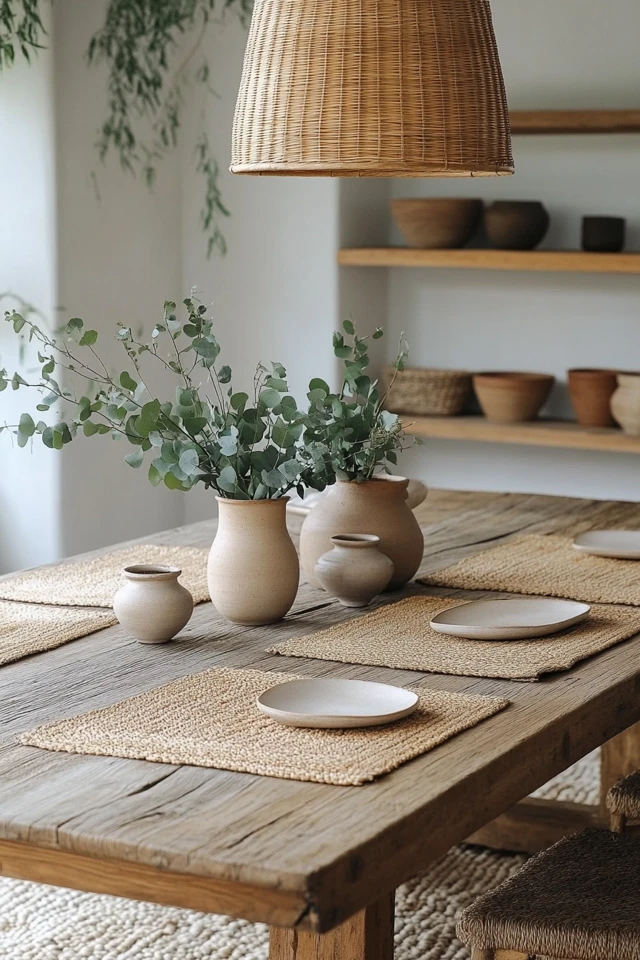
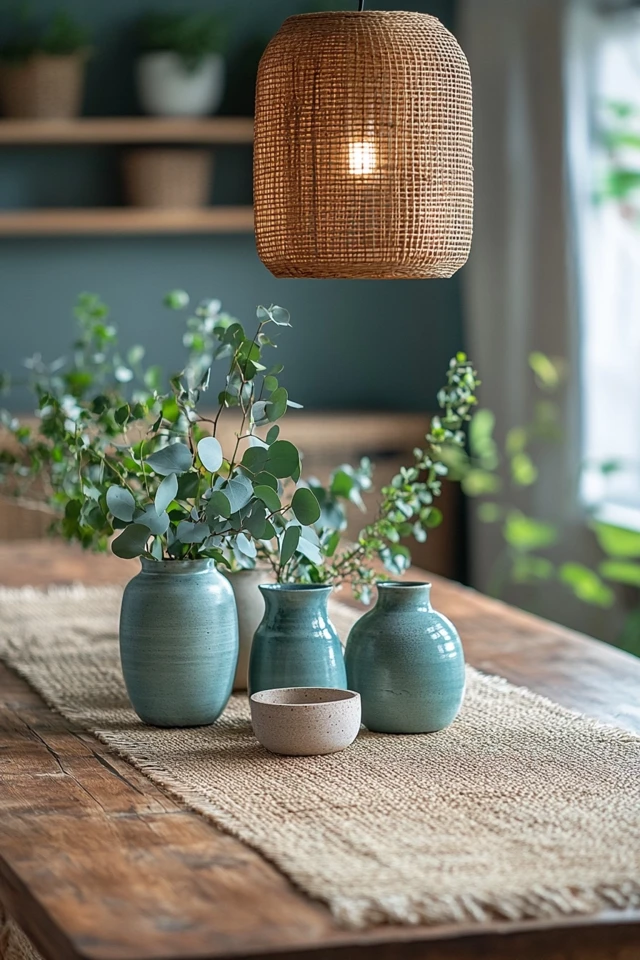
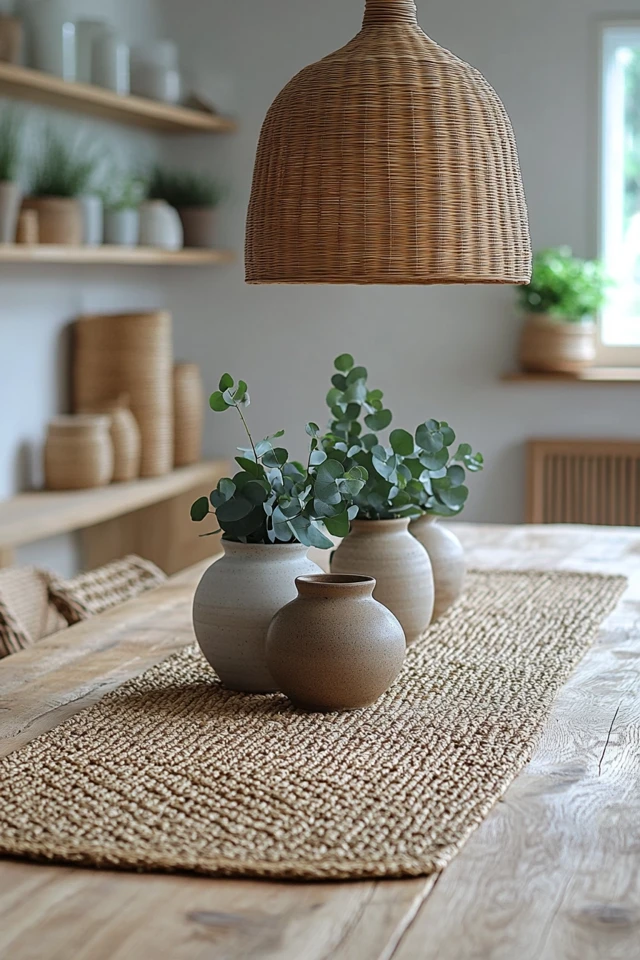
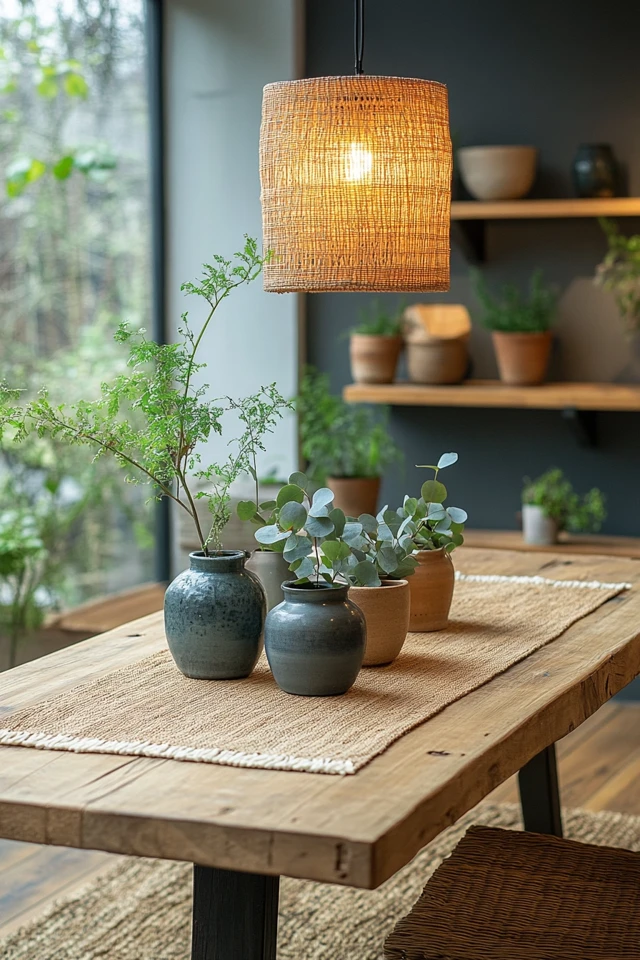
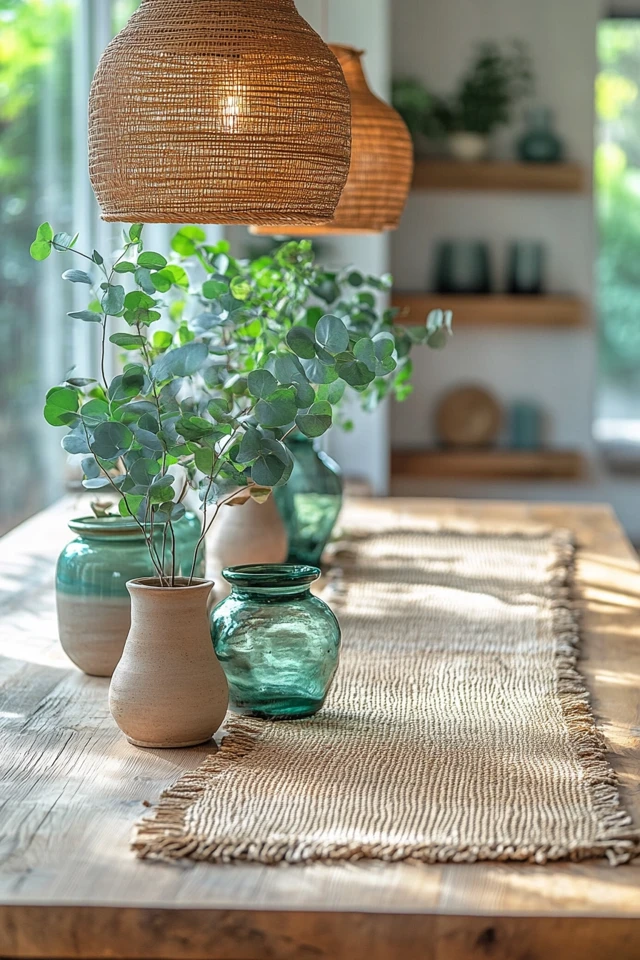
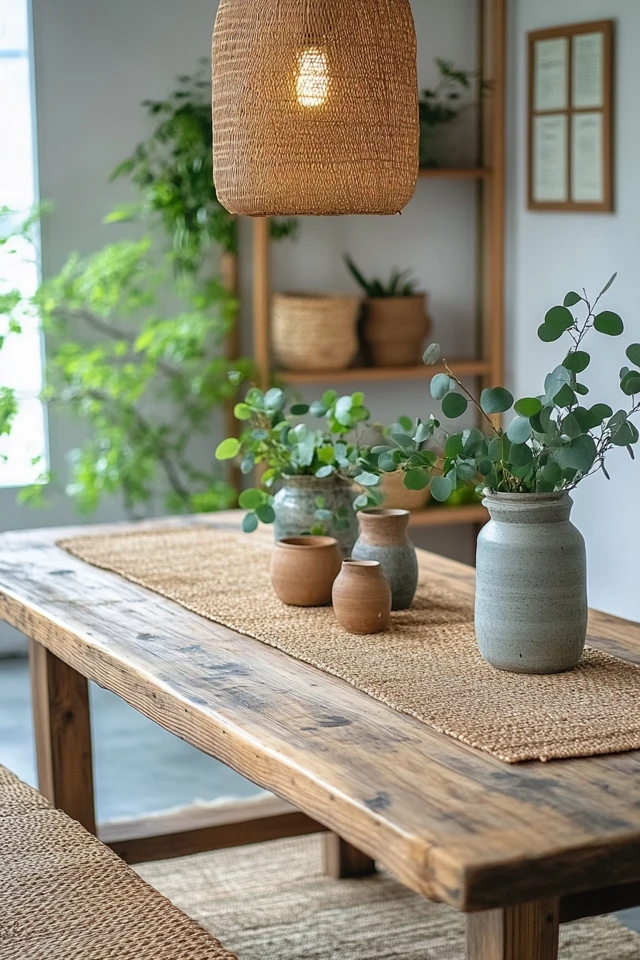


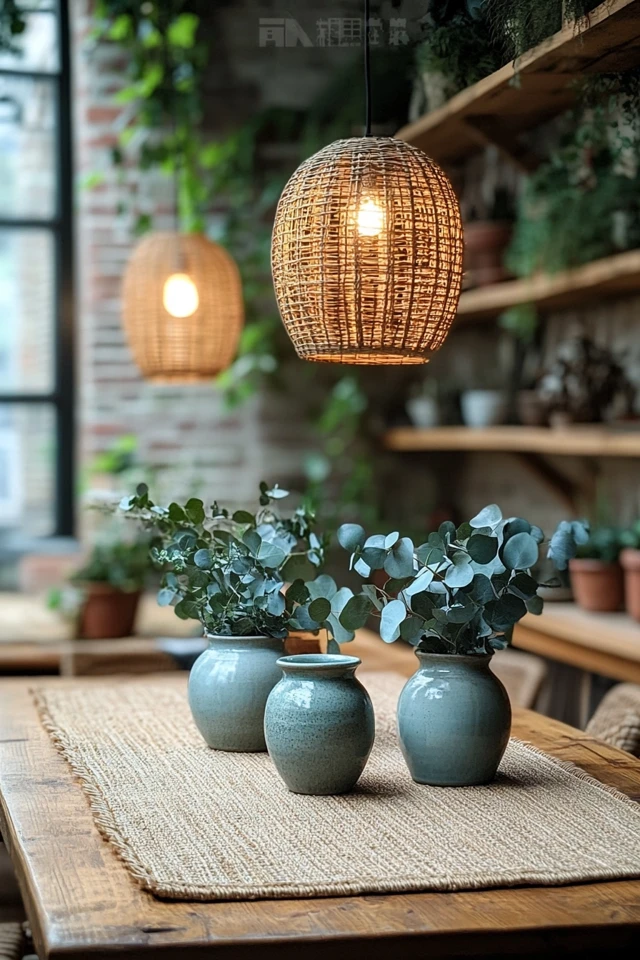
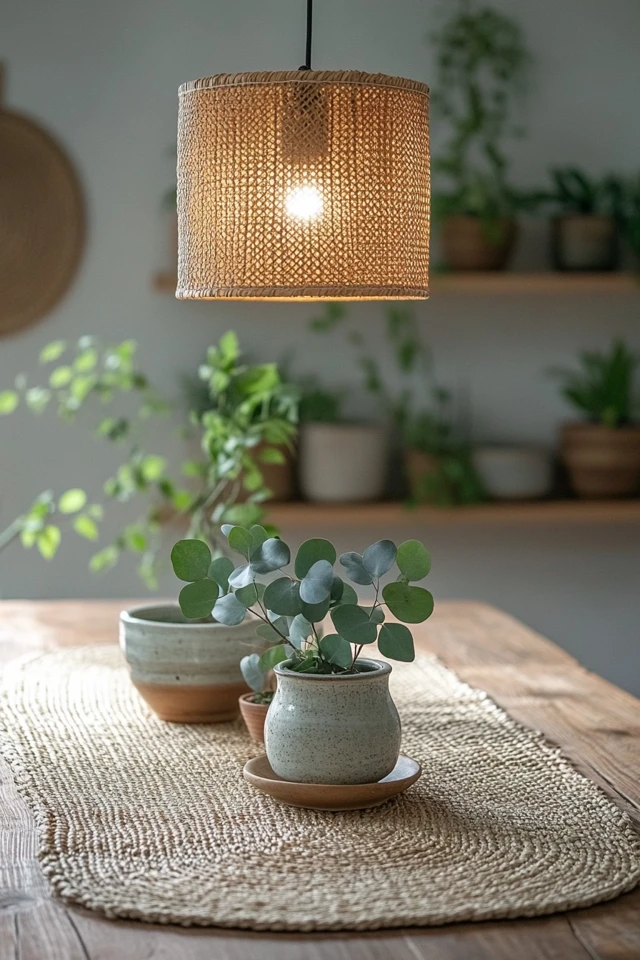
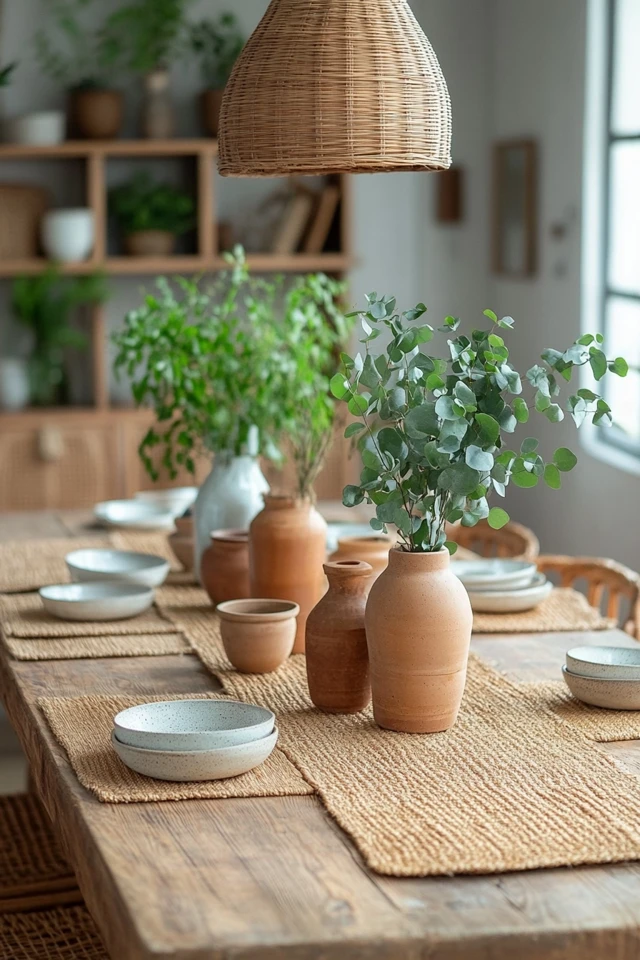
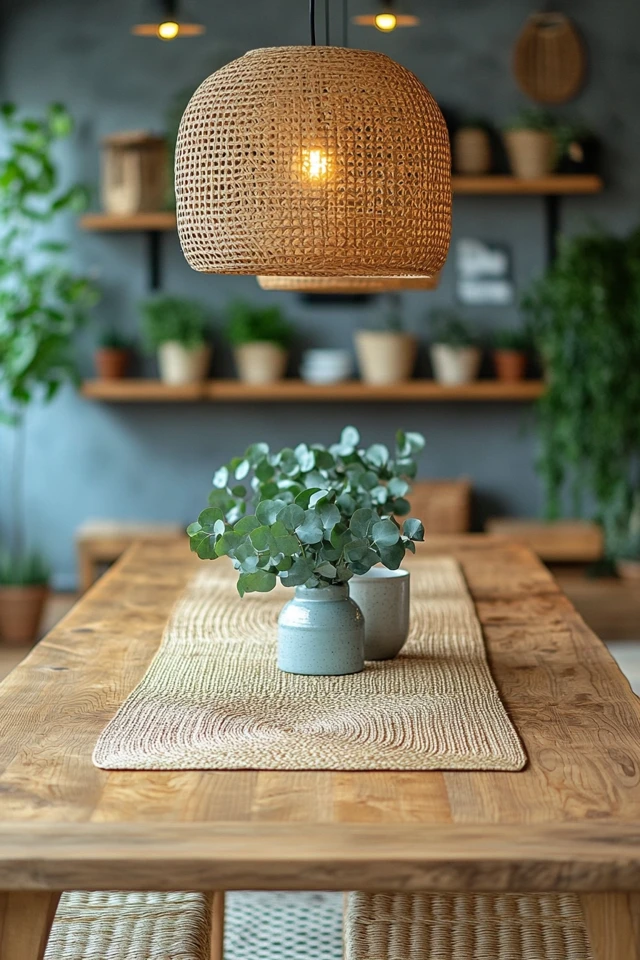
Conclusion
Incorporating natural elements into your bohemian room brings balance, warmth, and an organic connection to the outdoors. By layering woven textures, embracing plants, styling with wood and stone accents, and incorporating natural fiber textiles, you can create a cozy and grounding retreat. Whether it’s through macramé, rattan furniture, or dried botanicals, natural materials effortlessly elevate your boho space with timeless beauty and earthy charm.
Embrace imperfection, celebrate craftsmanship, and let nature inspire a bohemian sanctuary that feels uniquely yours.
FAQ
1. What natural materials work best in boho design?
Rattan, jute, wood, linen, stone, and clay are perfect natural materials for bohemian spaces.
2. How do I incorporate plants into my boho room?
Use plants like monstera, pothos, or snake plants in terracotta pots, woven baskets, or macramé hangers.
3. What rugs work well for natural boho spaces?
Jute, sisal, wool, or layered kilim and Moroccan rugs work best for adding earthy textures.
4. How can I use wood in my bohemian room?
Opt for light, unfinished wood in furniture, shelves, or decor pieces like stools, trays, or picture frames.
5. What colors complement natural boho elements?
Earthy tones like beige, terracotta, olive green, taupe, and cream beautifully complement natural textures.


